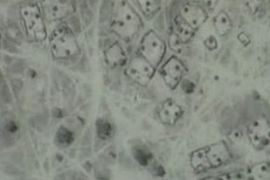Amnesty asks public to watch Darfur
Satellite images will let internet users monitor villages for human-rights abuses.

| External link |
“Our goal is to continue to put pressure on Sudan to allow the peacekeepers to deploy and to make a difference in the lives of vulnerable civilians on the ground in Darfur.”
More than 200,000 people are believed to have died and two million driven from their homes since the conflict between ethnic African rebels and the government, backed by the Arab Janjawid militia, began in 2003.
Khartoum disputes those figures, saying 9,000 people have died, and rejects accusations of genocide.
Joint force
 |
| Two million people have been driven from their homes in Darfur since 2003 [EPA] |
The deal now needs to be endorsed by the African Union’s Peace and Security Committee as well as the Security Council.
The images for the Eyes on Darfur website come from commercial satellites and would allow activists to track developments as they occur, Amnesty said. While the images would not be live, they would only be a matter of a few days old.
Lars Bromley, from the American Association for the Advancement of Science, which advised Amnesty on satellite imagery, said the images could show destroyed huts, massing soldiers or fleeing refugees.
“The technology allows Amnesty International to expand its traditional role of shining a light on human rights violations,” Ariela Blatter, director of the Crisis Prevention and Response Centre at Amnesty USA, said.
Images of abuses could also be used in any future prosecutions, she added.
Al Jazeera is not responsible for the content of external websites.